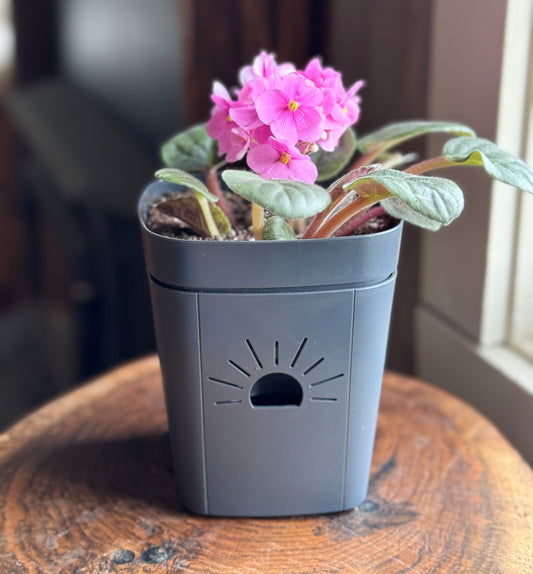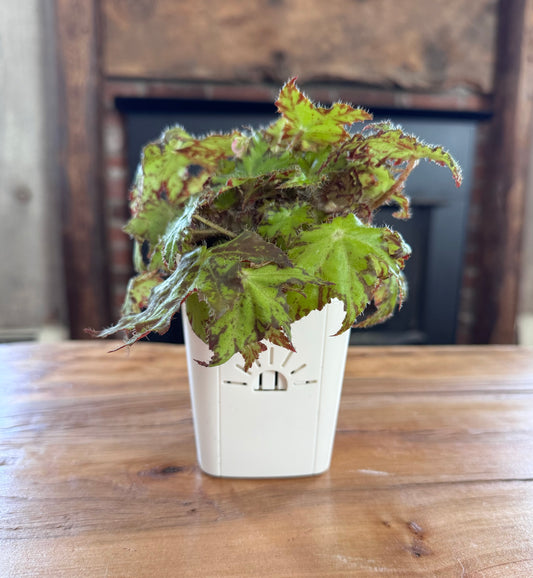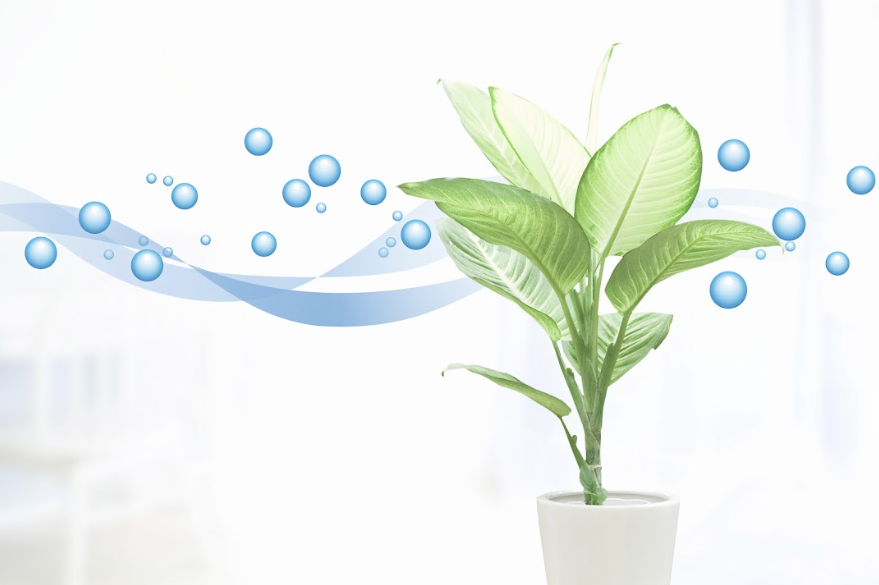Origins
Calathea plants have various names, such as prayer plants, peacock plants, rattlesnake plants, zebra plants, and cathedral plants. These plants belong to the arrowroot family Marantaceae.
Calathea is native to tropical parts of Latin America, such as Bolivia, Columbia, Panama, and Puerto Rico, among others. They have since been introduced to Hawaii and grow well in the warm climate there.
Light
Requirements
When it comes to light requirements, Calathea prefers low to medium light. Indoors 6-8 hours of bright indirect light is perfect. Direct sunlight can be harmful and cause damage like sunburn or dullness in the color of the leaves. If you’re placing your plant near a window, make sure to use a sheer curtain or provide some kind of shade so that it doesn’t receive too much direct sunlight. Additionally, place your Calathea away from any heat sources, such as radiators and air conditioners, which can also harm the plant by drying out its leaves. With proper care and attention, this genus will thrive indoors!
Genus Summary
| GENUS | Calathea |
| COMMON NAMES | Peacock plant, Cathedral plant, Prayer plant, Rattlesnake plant. |
| LIGHT | Bright Indirect |
| WATER SCHEDULE | 14 days, as moist as a wrung-out sponge |
| WATER REQUIREMENTS | Keep the soil evenly moist but not soggy. |
| HUMIDITY | High |
| TEMPERATURE | Above 65°F |
| FEEDING | 1x month |
| TOXICITY | Non-toxic to humans and pets |
| PESTS | Spider mites, aphids, mealybugs, and scale insects. |
| DISEASES | Leaf spots caused by Psuedomonas and blight. Alternaria leaf spot. Helminthosporium leaf spot. Fusarium wilt. |
| POT | Excellent drainage |
| SOIL | Rich, but well draining. African violet mix |
| FERTILIZER | Diluted, during the growing season only |
| PROPAGATION | By division |
| PRUNING | Only to remove spent blooms or dead leaves |
| SIZE | 10 to 36 inches |
Water Requirements
If you are using a Naked Root planter, you can follow a 14-day watering schedule for Calathea plants.
Calathea plants require a humid environment and are sensitive to the quality of their water. Tap water may cause their leaf tips to turn brown, so it is best to use filtered or distilled water at room temperature. If distilled water is not available, leave a container of water out for 24 hours before use. The soil should be consistently moist but not soaked. Do not wet the leaves, and only water when the top inch or two of the soil feels dry.
Humidity
Calathea plants like high humidity. They live in rainforests naturally, so place them near a humidifier. If you don’t have that option, a people tray can be beneficial. It also helps to group humidity-loving plants together so they can conserve moisture.
Temperature
Calathea plants will go into a dormancy stage if the temperature drops below 65°F. Because they are native to tropical regions, they are happiest at 70-75°F.
Toxicity
Calathea plants are non-toxic to both humans and animals. You can grow them around your kittens and toddlers without worry.
Pests and Diseases
Spider mites, aphids, mealybugs, and scale insects are the most common pests that can affect a Calathea plant. Neem oil and insecticidal soap can be used to treat these insects. To get rid of them, you can use an alcohol-soaked q-tip to remove them from the plant and then spray the plant with either neem or insecticidal soap.
Leaf spots caused by Psuedomonas and blight can manifest as water spots on the plant’s leaves. Applying a copper fungicide can get rid of leaf spot, including Alternaria leaf spot and helminthosporium leaf spot, but there is no known treatment for Psuedomonas blight. To ensure the spread of the disease does not reach other plants, dispose of the infected plant and its soil.
Calathea plants may be susceptible to Fusarium wilt, a fungal disease that leads to the yellowing and wilting of leaves, with browning of the stem veins. To slow the spread of the disease, try drenching treatments of copper fungicide. However, the only way to fully eliminate it is to get rid of the infected soil.
Pot
Adequate drainage is a must, as Calathea plants have root nodules that are fleshy and can rot in overly moist soil. They do especially well in air root pruning containers, as this environment stimulates the growth of hundreds of tiny feeder roots. This, in turn, prevents root rot and keeps the plant from becoming pot-bound.
Soil
Good soil is essential for calathea and should be kept moist but not wet and should have good drainage. African violet potting soil is a great choice for calathea, and a mix of peat moss, perlite, and potting soil/fine compost can be used as well. Avoid mulching, as this can damage the roots. Small amounts of worm castings and organic matter can help retain moisture. A drainage hole in the container is necessary.
Fertilizer
Calathea plants don’t require a lot of fertilizing, typically only during the growing season, which runs from the beginning of spring to the end of fall. Use half a teaspoon of kelp fertilizer per 32 ounces of distilled water once each month, replacing regular watering with this solution. Distribute the liter over a period of time, not all at once.
If your plant’s leaves are becoming yellow or if it is drooping and wilting, this may be an indication that you have fertilized too much. These may also be signs of inadequate fertilizing, so use caution. If your plant’s leaves are yellowing after monthly fertilizing, reduce the frequency.
Calathea is susceptible to salt damage. If you are using a commercial fertilizer, dilute it, and at least once per season, flush the soil with several gallons of water to remove any salt buildup.
Propagation
Unlike other plants in the Marantaceae family, it is not always possible to propagate calathea plants by taking cuttings from a mother plant. Additionally, since most species of calathea will not produce seeds when grown indoors, propagation by seed is not an option. Therefore, the best way to propagate calathea plants is by dividing them during repotting.
Moisten the soil in the planters you wish to use. Carefully take the calathea out of its original container and remove any extra dirt. Examine the roots and stems where they connect, then delicately separate them with some leaves. Place each new plant in a container and cover the roots with soil at the same level as before. Finish by topping off the pots with a bit more of the potting mix.
Pruning
If desired, pruning is only needed for aesthetic purposes. If a leaf has turned yellow due to age or has brown edges, it can be carefully snipped off with a clean and sterile pair of pruning shears just above the soil. Do not trim the central leaves. Brown tips on leaves are a common occurrence, so trim the brown edge off the leaf, and the rest should be fine. Once the flower stalks have faded, cut them off so your plant can focus its energy on growing new flowers.
10 Striking Varieties and Cultivars
With so many cultivars out there, it is really hard to pick a favorite. We think you should give in and get one of each!
- Calathea Orbifolia -Calathea orbifolia is an eye-catching plant with large and leathery green leaves adorned with a silver pattern. It can grow to be 2.5 feet tall and wide, and its new growth sprouts from the center. With its impressive size, it will bring a tropical atmosphere to your home.
- Calathea Warscewiczii – Calathea Jungle Velvet is an apt nickname for this incredible plant, which has lance-shaped leaves with a velvety texture and a dark green hue that is banded with lighter green in a fishtail pattern. The underside of the leaves has a deep purple hue. At night, the leaves close just like most other members of this family. Each leaf grows to about a foot in length, and the plant itself reaches up to 3 feet tall when fully mature. During winter and late spring, tall spikes of white bracts appear that last for a month.
- Calathea Makoyana – Also called Peacock Plant, this lovely Calathea has oval-shaped leaves that are paper thin. Each leaf is green on top with peacock markings and then purple on the underside. The markings are a mixture of green, cream, and purple and look shiny under the light. Each leaf can grow a foot long and is attached to a red stem. New leaves emerge rolled tightly and unfurl to a total plant height of 12-18 inches.
- Calathea Crocata – This new variety is also known as an eternal flame because of the bright fire-orange flowers. The flowers are born on tall green spikes and have petals that curl outward like lilies. The blooms last for three months allowing you to enjoy the shiny iridescent foliage. Crocata grows 2 feet tall and nearly as wide.
- Calathea Ornata – The common name for this variety is the pinstripe plant. It is native to Ecuador and Columbia and is a popular houseplant. The leaves are ornately striped with pink, white, and green in a feathery pattern. The leaves are oblong, purple on the underside, and grow over 12 inches long.
- Calathea Zebrina – This is one of the easiest-to-find Calatheas. It is native to Brazil and will add a bit of the tropics to your home decor. The leaves are 12 inches long, light green with purple undersides, and have dark green zebra stripes. Each leaf grows in an ovular shape and is marked by a pale green stripe down the middle.
- Calathea Lancifolia – This calathea has the nickname of rattlesnake plant because of its snake-like markings. The leaves are strappy and thin and can grow 18 inches long. The edges of the leaves are wavy, and the patterns are a mixture of light and dark greens.
- Calathea Rufibarba – This is another common Calathea that you can find in many garden centers. The incredible leaves are velvety underneath and feel like they are covered in fur. It is native to Brazil and has glossy leaves shaped like long spears of burgundy and green. This one grows nearly 3 feet tall indoors!
- Calathea Roseopicta – Also known as the rose-painted calathea, it does look like each leaf was painted by an artist. The foliage is glossy and shaped like a large oval painter’s palate in colors of dark green, lime green, and scalloped white edges. The underside of each leaf is purple and six to 8 inches long. The whole plant reaches 18-22 inches tall.
- Calathea Roseopicta ‘Rosey’ – This cultivar is similar to its parent, but the leaves are pink! Each leaf is striped in cream and edged in dark green, with a dark purple underside. The total plant is the same size as its mother, about 20 inches tall. For optimal health of your ‘Rosey,’ ensure that the soil is consistently moist and nutrient-rich and that it offers good drainage. Maintain your home’s temperature above 65°F and make sure to avoid exposing it to any chilly drafts.
Summary of Calathea Plant Care
Calathea thrives in warm indoor temperatures ranging between 65°F and 80°F and can be damaged by temperatures that get too low. It needs consistently moist soil with good drainage and high humidity to prevent browning or curling of the leaves. Salt sensitivity is common in Calatheas, so fertilize with a half-strength, water-soluble houseplant fertilizer no more than monthly during the growing season, and flush the soil regularly to remove any salt buildup. Cold drafts should also be avoided, and bright filtered light is best for optimal growth and leaf color. Too little light can result in leggy plants, and too much direct sunlight can burn the foliage.





 Verified Buyer
Verified Buyer









